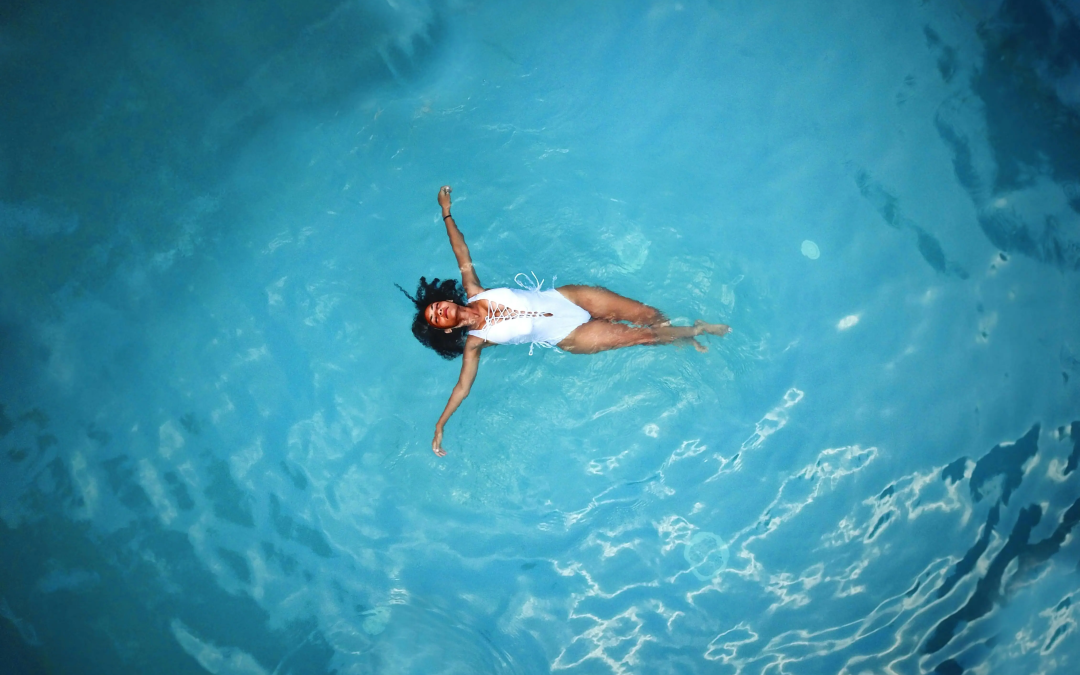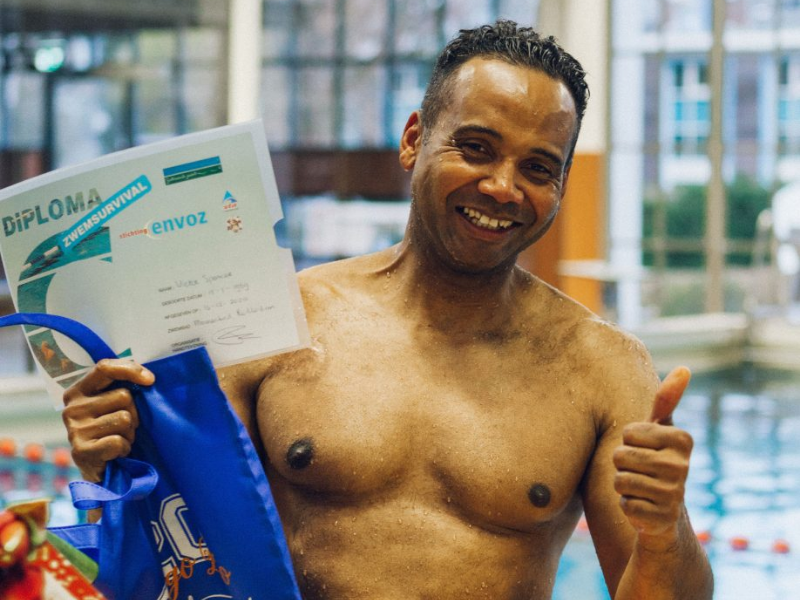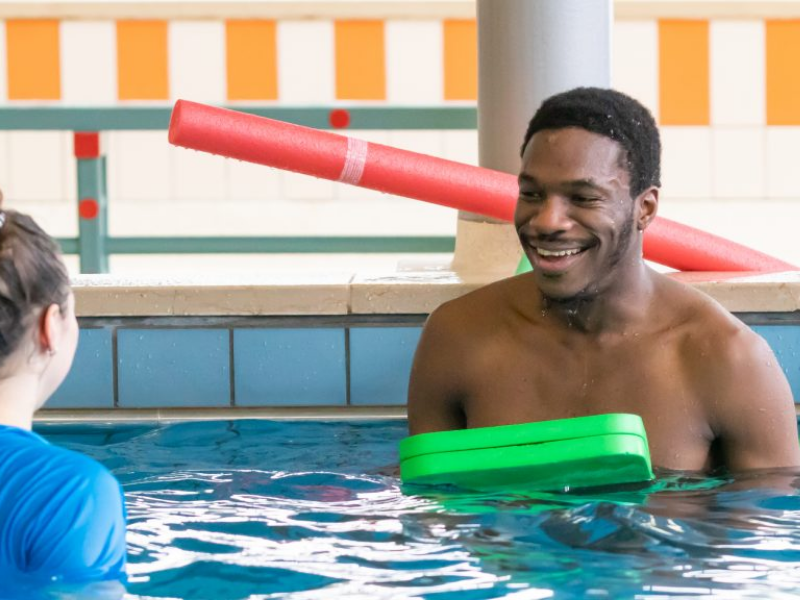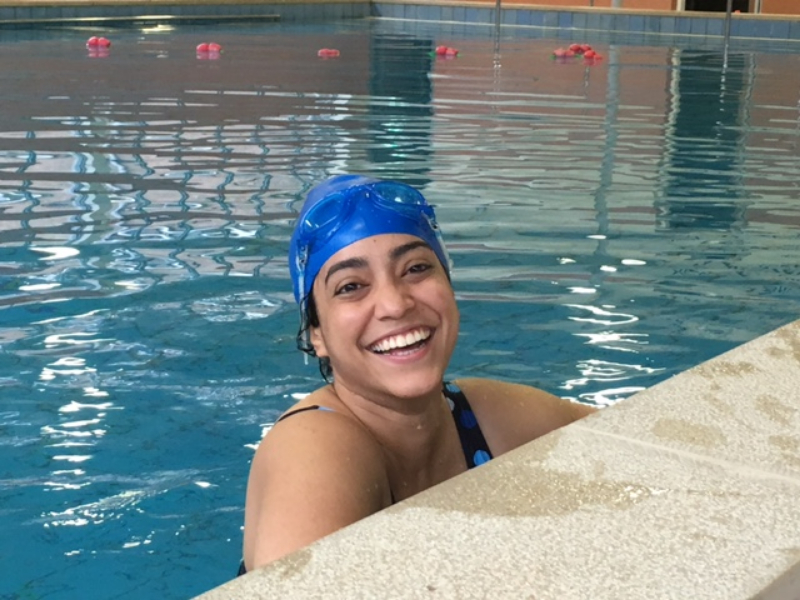Uncover the secrets to relaxed floating and say goodbye to sinking
Floating reminder:
While you have most likely seen the proper technique for floating on our YouTube page, lets have a recap on the steps:
For the back float
- Go into your squat position (knees bent and arms straight infront on the surface of the water), tilt your head back making sure your ears are inside the water.
- Then fill your lungs with air as you begin to lean back. The more air you have the easier it will be to float.
- Lastly push your chest, stomach and hips up towards the ceiling. This will bring your body to the surface
For the front float
- Go into your squat position, take a deep breath tilt your head forwards.
- Next, kick your your legs back in a gradual manner, straightening backwards.
Something to consider before begining this journey…
Body composition will affect your ability to float and how easily this skill comes to you. People with higher muscle mass or with very low body fat will find it more of a challenge to float. This means that your body might behave differently in water, and maybe your float position looks different. However, it is still possible with patience and practice.
Let’s dive into some great tips!
- Spread out
- Relax
- Body position
Spreading out:
The more you are able to spread the more your weight will be distributed, this means that your are placing less pressure on each sector of water. This allows for buonacy (the force pushing you up) to overpower the forced pushing you down. Spread out like a star!
On your back: Spread out like a star, arms and legs apart stretching far. You can start with hand floats like the ones show in our video above.
On your front: Follow the steps mentioned and make the same star shape. For this you can use the wall for support the first few times.
Relaxing your body:
This will look different for each of our swimmers. We all have a different relationship with water so it is okay if we take less or more time to learn how to relax in the water. But how can you work on relaxing?
Breathing
First before heading into your floating postion do three deep breaths to take out any nerves you might be holding. Next, take a nice inhale of air filling up your lungs like balloons. The more air you have the easier it will be to float.
One final important tip is to make sure you are holding your breath in a soft manner. If you hold your breath in a tense manner it will contract your muscles making it harder for you to float.
Muscles
This leads us yo your muscles. Focus on how they feel when you float. Are they relaxed or tense. Are the contracted? Sometimes we curl our stomach or stretch our limbs too far out that our muscles become rigid. This will make it harder to float. When you observe this, try to first relax your tummy, then your chest and slowly the rest of your body will follow.
Head and neck
Your head should be layed on the water as if you were sleeping on your pillow. You can do this after you go into squat position for either float. Before tilting your head (either back or front) you focus on relaxing your neck muscles, and slowly let your head fall whichever way you are floating.
Body position
If after these tips you are still struggling to float, you need to engage your core. Yes, activating your core will help you float.
Swimming is always a balance you want to be both relaxed and have your core activated. Therefore, practicing and being patient is important so you can keep on learning on how to adjust the levels of relaxation and muscle engagement of your body.
On your back: Engage your abdominals to help bring your legs and toes up. When your feet are near the top you can relax, which will allow you to stay a top.
On your front: After placing your head in straighten your legs out. When bring your feet back engage your core, helping bring your feet near the surface. When your feet are at the top you relax.
Overall, floating is possible for everyone, and it will look different according to your body composition. Some swimmers find it easier to float while others might find it easier to swim underwater. Also, it might take different amount of times for you to achieve a comfortable float, and this is perfectly normal. The best tip is to patient and consistent, always practice even if you are in our sports class.
Lastly, comparison is the thief of joy. So take your time, celebrate your peers and your accomplishments even if they are different. Know that we all have different swimming journeys!
To explore more about floating, read our blog on exercises which help perfect your float!
Other articles you might like
Diploma system
Your Personal Swim Coach lessons are structured around the Dutch ABC Diploma curriculum. Find out how it works and what all of them entail!
Floating in swimming
The science of swimming. Do people float better in salt water in the sea, or fresh water in the swimming pool? And other questions around floating are answered in this article.
Our adult swimming classes
Your personal swim coach is here to help you become a more confident, stronger, and healthier version of yourself.
Water introduction
Are you unable to swim or are you afraid of water? Have you taken lessons before and failed? Or it has been a long time ago? Then join us at ground zero in water introduction!
Stroke introduction
If you comfortable in water but are not able to swim the 4 basic strokes, this level is for you. Requirements include: passing introduction level, or swim back-crawl, and backstroke (froggy leg).
Intermediate
To join this level you need to be able to swim comfrotably in shallow water, however it is okay if deep water gives you discomfort.
This level requires for you know all the 4 basic strokes.
Advanced
If you have no issues in the deep water and you are able to swim more than 100m without getting exhausted this level is for you!
You want to become fitter and stronger with swimming as your weekly workout!




